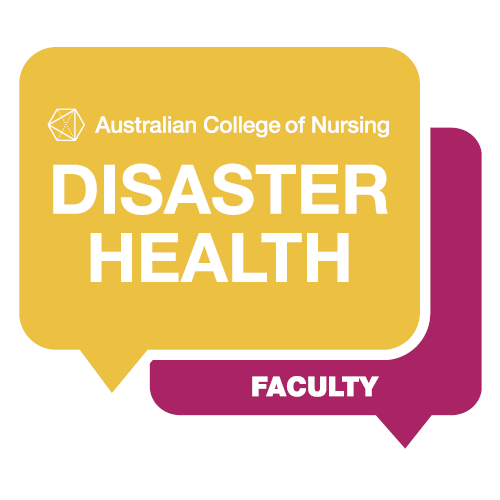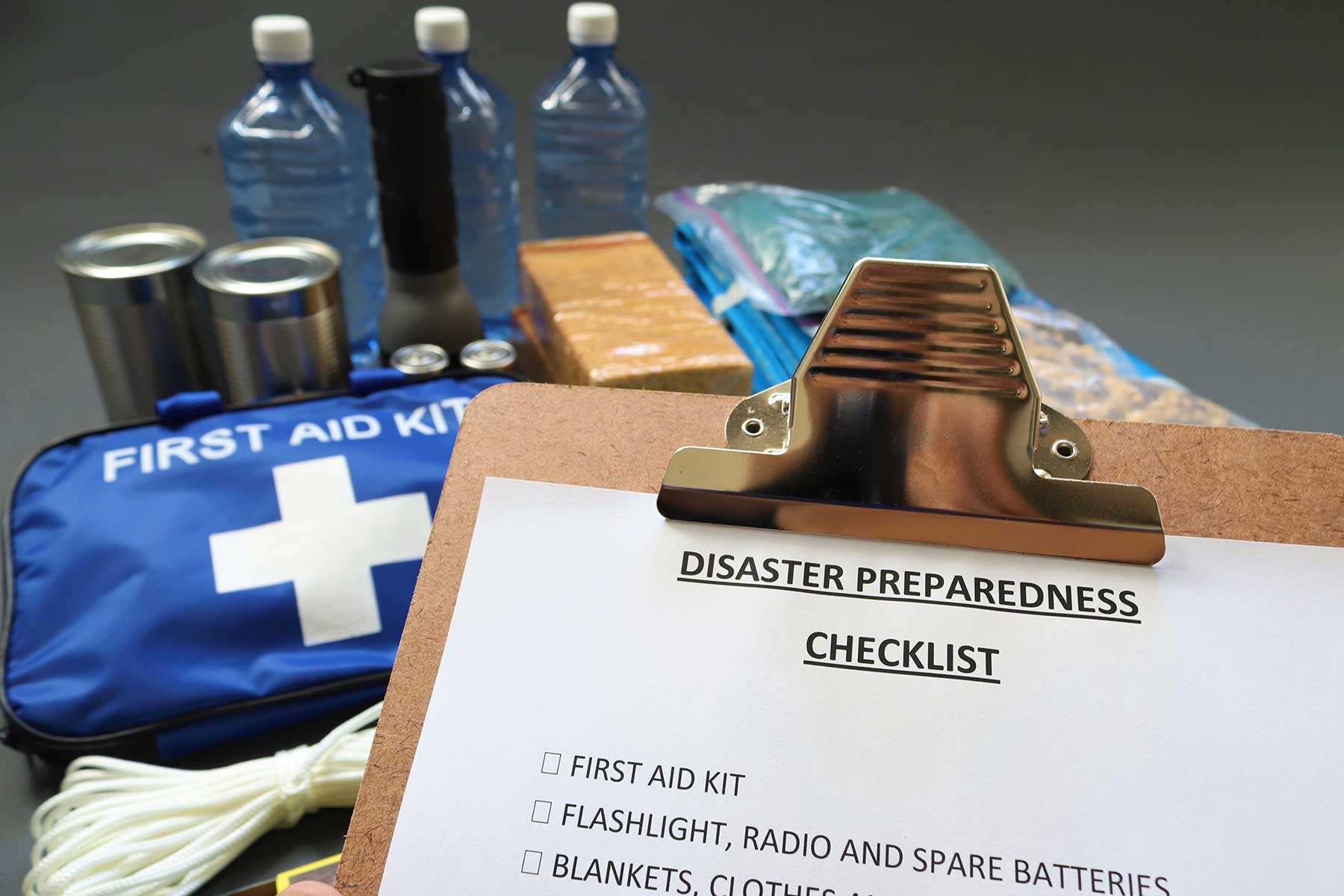Featured Image: speedshutter Photography on Shutterstock
The Australian College of Nursing (ACN) Disaster Health Faculty supports the development of resources to prepare nurses to respond to disaster conditions.
A nurse faces disaster conditions when the normal functioning of the organisation has been suddenly disrupted by a wide-scale emergency. Emergencies can be isolated to the organisation or affect the wider community and include natural disasters, pandemics, large-scale accidents, mass attacks, war, or attacks on infrastructure including cyberattacks.
Nurses are a key part of the disaster response for government and non-government organisations and are utilised in response, rescue, recovery and to provide direct care to impacted consumers. They can also be bystanders outside their official working hours during a disaster incident and work with immediate community members in the initial response.
The Disaster Health Faculty connects and inspires nurses who are interested in or looking to develop their skills in disaster response by providing opportunities to learn from each other and network with like-minded nurses. As part of this commitment, the Disaster Health Faculty sat down with us to share an insight into flood safety and what nurses need to know.
How are floods typically caused?
Floods can be caused predominantly two ways. When heavy amounts of rainfall cannot travel through natural waterways such as rivers and creeks or through drainage systems, they overflow and flood the nearby area. The other form is found in coastal areas and is due to water rising inland due to storm surges. Storm surges are caused by high tides, cyclones, tsunamis or other abnormal weather events.
Aside from the immediate risk to life for people experiencing floods, what risks does entering floodwater pose?
For most people interacting with floodwater, the most immediate danger is to a person’s life. Water is often much deeper, faster and more contaminated than expected, and it is always advised not to go into floodwater. If a person enters floodwater, they are at risk of infection due to contact with:
- contaminated floodwater
- soil
- mud
- sewage
- animal, household or industrial waste and,
- animal carcasses.
There are many things to be concerned about! What can we do to ensure safety during a flooding event?
There are several tips that you can keep in mind and inform your patients of when they are at risk of a flooding event. These tips are especially necessary in times such as natural disasters, predicted heavy rain, La Niña seasons, and large-scale water events.
You can stay safe by:
- Remembering that danger can be found both above and below the water. Roads and bridges can be damaged or washed away, debris may cause trip hazards, live powerlines can be underwater, and dangerous animals may be taking refuge in unusual locations.
- Not walking through floodwater or mud as it may be contaminated by sewage and other debris. This is important particularly for people prone to infections, such as young children, pregnant people, the elderly and those with chronic diseases such as diabetes. You should also avoid floodwaters if you have open wounds.
- Not driving through flood water. Vehicles can and do become trapped, flooded or washed away.
- Cleaning all new and old wounds if they have been in contact with flood waters.
- Maintaining good hygiene as it is vital to avoiding infection.
- Disposing of any medication, food, or dressings that have been in contact with floodwater. Food can become contaminated at any point during storage, preparation, and consumption.
- Tinned food can be kept for use as long as the tin is not opened, bulging or damaged. Wash the tin, sanitise it in a bleach solution and use it as quickly as possible.
- Not assuming that tap water is uncontaminated after a flood event. Contact your local council to check whether the local water supply is safe. If in doubt, boil all drinking water before use.
There were a lot of reports in the last few years about an increased presence of snakes and spiders after flood events. What can nurses do to support their consumers when navigating snakes and spiders?
Snakes and spiders are normally much more hidden but can be more active during flooding as they seek refuge from the water. Snakes and spider bites are potentially life-threatening. If you are bitten by a snake or spider, follow the Healthdirect advice:
- Call triple zero (000) and ask for an ambulance. If calling triple zero (000) does not work on your mobile phone, try 112.
- Keep still.
- Do NOT wash, clean, suck or cut the bitten area.
- Apply a firm bandage (if you have one) along the full length of the affected limb and immobilise the limb with a splint.
- If you do not have a bandage, apply direct pressure over the bitten area and immobilise with a splint.
- If you are bitten on the abdomen or torso, apply direct pressure over the bitten area and keep still.
- Do NOT remove the bandage or splint once it has been applied.
- Mark on the bandage where the bite occurred.
- Take a photo of the animal if it is safe to do so (for possible identification) but do NOT try to catch or kill the animal and always maintain a safe distance from them.
We also hear a lot about mosquitos after flood events. What do we need to know about mosquito-borne viruses?
Mosquitos are a common insect found around water and in wet or humid conditions. Receding floodwaters and trapped, pooling water from rainfall provide ideal conditions for mosquito breeding, which could lead to an outbreak of mosquito borne infections. In Australia, mosquitos can spread Dengue, Ross River fever, Barmah Forest virus, Japanese encephalitis, Murray River encephalitis, and Kunjin virus.
To stay safe, NSW Health provides the following tips:
- Mosquitoes can bite through tight clothing so wear loose, long, light-coloured clothing and covered footwear with socks. Clothing requirements are important, especially at dawn and dusk when mosquitos are most active.
- Apply mosquito repellent evenly to all areas of exposed skin. The most effective repellents contain picaridin, the chemical DEET or oil of lemon eucalyptus. Read the instructions to find out how often you should reapply repellent. Always apply sunscreen first and then apply repellent.
- Mosquito wristbands and patches are not recommended as there is no evidence that these provide good protection against mosquito bites.
- Natural or homemade repellents provide limited protection against mosquitoes.
- Where possible, limit outdoor activity if lots of mosquitoes are about, particularly around areas like swamps and wetlands.
- Remove debris and vegetation from storm drains and ditches to help prevent mosquitos from breeding.
- Drain areas in and around yards and workplaces where water has accumulated.
- Empty all containers with water weekly, including buckets, tyres, birdbaths and palm fronds, to reduce the number of places where mosquitoes can breed.
- Check the integrity of water tank screens and replace them if required because mosquitoes can breed in domestic water tanks.
Is there anything else nurses need to know?
To best stay safe, it is important to plan ahead. As outlined in , planning includes preparing yourself and loved ones, checking your workplace’s flood safety plan, and sharing resources with patients who are at risk of floods. While floods are often sudden and far-reaching, warning signs should be taken where possible.
To find the latest up-to-date information, check your local fire and rescue service, state emergency service, state health service, and local council for advice on staying safe.
Disaster Health Faculty
The Disaster Health Faculty provides a networking opportunity for nurses interested in or engaged with disaster responses. Meet other like-minded nurses, help support the development of resources for nursing leadership, and find your purpose in disaster nursing. Join the Faculty today.






